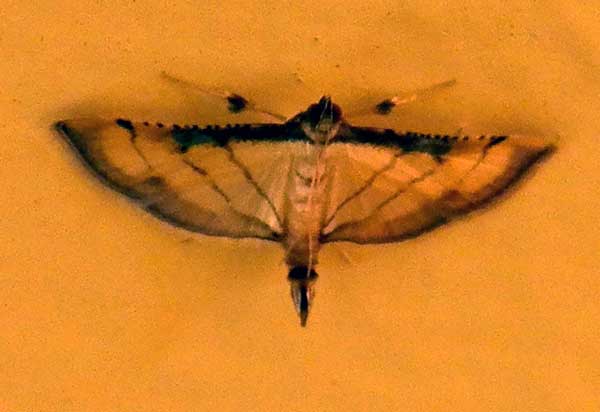Grass Moth

Observed at Mombasa, Kenya, January 2012. The wing span is about 2 cm. The true head is facing up.
There are probably hundreds of species of Crambidae found in Kenya. The majority are small, drably colored and fly only at night. They are most frequently seen beneath electric lights. Some species are very important pests of crops such as rice, corn and sugarcane. As a group they can usually be recognized by the enlarged labial palps appearing as a snout. The snout performs sensory functions and cannot bite or sting people.
The pattern of marks on this moth are very specifically a defense against insectivores that hunt using visual information. Birds, lizards and some mammals have acute vision to discriminate prey items from leaves and other inedible objects. The information gathered also must tell the predator how best to attack. In this case there is a convincing head pattern at both ends, especially the posterior (facing down in this image). Thus, as the bird strikes, the moth might take flight in an unexpected direction. Even if the bird finally discerns the correct location of the head it could give the moth an extra split second to escape. This is a striking visual example of how natural selection works.